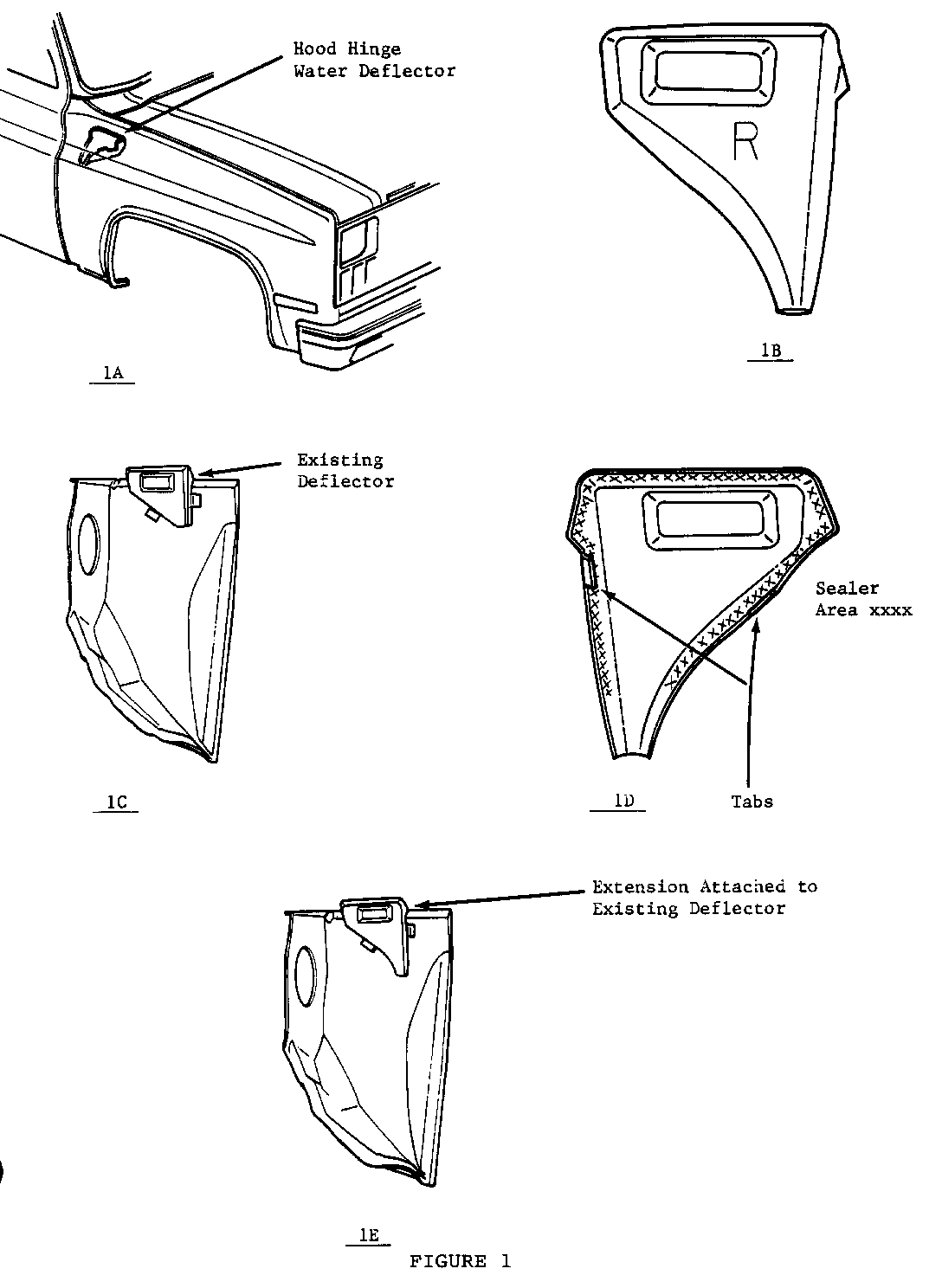WATER LEAK THROUGH FRESH AIR VENT

WATER LEAK THROUGH THE KICK PANEL FRESH AIR VENT
VEHICLES AFFECTED: 1985-86 C/K AND 1987 R/V MODELS ------------------ WITHOUT AIR CONDITIONING
Some 1985-86 C/K and 1987 R/V models without air conditioning may have water entering into the vehicle through the right and/or left fresh air vents in the kick panels. With the fresh air vent in the open position, water from the hood hinge water deflector (Figure 1A) may drip into the fresh air vent door and then flow onto the floor of the vehicle.
To repair this condition, a hood hinge water deflector extension (Figure 1B) can be placed over the existing deflector (Figure 1C) to direct the flow of water past the fresh air vent door.
To access the hood hinge water deflector, remove the fresh air vent assembly from the kick panel and reach up into the inner fender through the kick panel opening. The triangular shaped hood hinge water deflector can be felt about four inches up inside the opening. The new deflector extension will snap over the existing deflector and be held in place by tabs on the extension as shown in Figure 1D. Figure 1E shows the hood hinge water deflector with extension attached. A silicone sealer applied to the back side of the extension as shown in Figure 1D will help hold it in position and prevent any rattling noise.
Labor OP T7400 should be used when performing this operation. Repair time is .8 hours for both sides.
PARTS INFORMATION:
Part Number Description Quantity ----------- ----------- -------- 15606309 Deflector - LH 1 15606310 Deflector - RH 1 1052751 G.E. Silmate Silicone Rubber As Required or equivalent
PROCEDURE:
---------- o Remove fresh air vent assembly as described in Section 1A of the Service Manual.
o Apply sealer as shown in Figure 1E.
o Snap extension into position over existing water deflector.
o Reinstall fresh air vent assembly.
This condition was corrected in production beginning with the following VIN breakpoints:
Janesville Chevrolet HJ161260 GMC HJ523044
Flint (Pickup) Chevrolet HF402404 GMC HF729089
Flint (Suburban/Blazer) Chevrolet HF162146 GMC HF526813
St. Louis Chevrolet HS168304 GMC HS525070

General Motors bulletins are intended for use by professional technicians, not a "do-it-yourselfer". They are written to inform those technicians of conditions that may occur on some vehicles, or to provide information that could assist in the proper service of a vehicle. Properly trained technicians have the equipment, tools, safety instructions and know-how to do a job properly and safely. If a condition is described, do not assume that the bulletin applies to your vehicle, or that your vehicle will have that condition. See a General Motors dealer servicing your brand of General Motors vehicle for information on whether your vehicle may benefit from the information.
